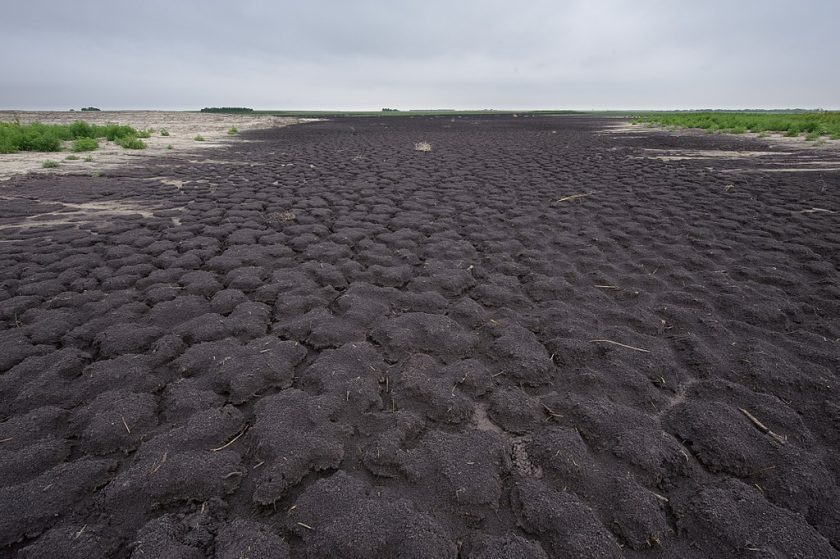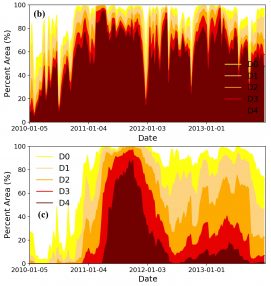Brutal Texas Drought Even Worse
December 5, 2022

In 2011, Texas experienced one of its worst droughts ever. The dry, parched conditions caused over $7 billion in crop and livestock losses, sparked wildfires, pushed power grids to the limit, and reduced reservoirs to dangerously low levels.
And according to a recent study led by the Jackson School of Geosciences, the drought was worse than previously thought.

The study, published in the Journal of Hydrology, incorporated additional soil moisture-related data from gravity and microwave sensors on satellites into a land surface model used by scientists to determine the severity of droughts. According to the updated model simulation, severe drought was more widespread and longer lasting than judged by the U.S. Drought Monitor, which is the current standard for designating drought across the United States.
“The development of technology has allowed us to gain more real-time observation, and this observation can more accurately reflect the ground conditions,” said Weijing Chen, the study’s lead author and a postdoctoral researcher at the Jackson School.
Even though the 2011 drought is now a decade gone, the results are important because they show that incorporating new sources of data related to soil moisture into an existing land surface model can more accurately predict the severity and impact of droughts. Soil moisture is one of the most important factors when it comes to a drought’s impact on agricultural production.
The researchers said that developing methods for better understanding droughts is important to Texas as policymakers try to determine how the state’s water resources will be affected by climate change and population growth.
“Using measurements from space is a clever way to be able to more realistically detect and monitor droughts,” said co-author Zong-Liang Yang, a professor in the Department of Geological Sciences.
Back to the Newsletter